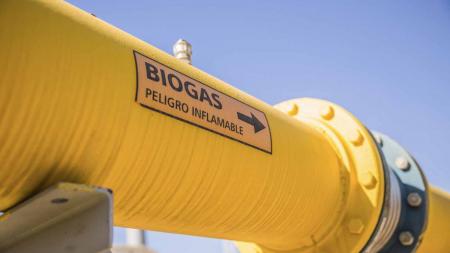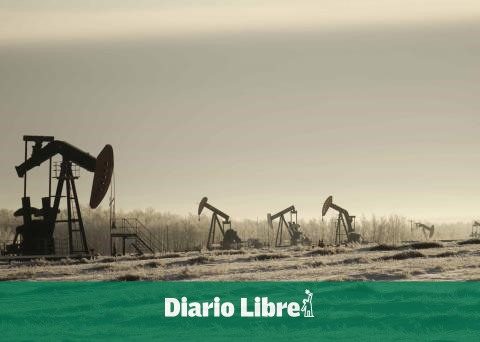Biogas is positioned as one of the main sources to generate electricity and heat, at low costs, and reducing polluting emissions from fossil fuels, and through the use of clean energy it proposes a circular model based on the use of renewable energies, the reuse of raw materials and the recycling of waste.
In recent years, one of the most promising clean energies is biogas that originates from agricultural waste and urban garbage: this gas, similar to natural gas due to its methane, contains carbon dioxide, and differs from conventional gas due to its origin. .
While natural gas is of fossil origin, that is, it is extracted from deposits on land and from limited resources as they are consumed, biogas is obtained from organic waste from a biological process that involves taking advantage of decomposing organic matter; this alternative becomes what is called a renewable source.
“Biogas is a mixture of gases that arises from the decomposition of urban solid waste as putrescible compounds within the landfill”Leonardo Gender-chemical engineer specialized in biogas
The main renewable energies in Argentina are wind, photovoltaic, energy and mini-hydro (small-capacity hydraulics), representing 16% of total energy, says Julio Menéndez, coordinator of the Bioenergy Committee of the Argentine Chamber of Renewable Energies (Cader). .
“Clean energies are those energy sources based on the use of the sun, wind, water or plant or animal biomass (among others). This type of energy, unlike fossil fuels, comes from resources that do not run out ever and they are sustainable,” adds Menéndez.
In this sense, this type of energy is obtained from organic waste of different kinds: “Urban solid waste, waste from agricultural activities, human beings and forestry are inserted in a circular economy whose purpose is to transform what is discarded into energy of continuous renewal”, points out the chemical engineer specialized in biogas, Leonardo Género.

Also, this type of gas can be produced through solid urban treatments, as explained by Marcelo Rosso, manager of New Technologies and Environmental Control at Ceamse.
“Biogas is a mixture of gases that arises from the decomposition of urban solid waste as putrescible compounds within the landfill,” he added.
Therefore, waste can be stored through two different processes: “by anaerobic decomposition that occurs when you submit agricultural waste to a biodigestion process in industrial plants, or by aerobic decomposition that is carried out in sanitary landfills,” he said. Rosso.
The biogas plants are made up of four spaces according to each stage: the first one is the receptors where organic waste is stored before transforming it, said Género.

The second stage is the biodigesters where matter goes from a solid state to a gas: “The substrate is introduced into a dark space, without light or oxygen, which functions as a closed enclosure. In parallel, they keep moving (or not) the mixture so that the bacteria come into contact with the waste. This process releases gases that are purified, generating biogas,” he explained.
The third stage is when the mixture is stabilized through the control and use of bacteria, being used for different purposes such as electricity, heating, or even for cooking; and in the last stage, the gas that is destined for electrical consumption is conducted to power generators such as turbines.
For its part, in the management of urban waste, organic matter must continue to a transition stage for the capture of gas.
“The waste is covered with new waste and goes through the process of anaerobic decomposition -total absence of oxygen- producing methane gas that is very polluting for the atmosphere.”

Rosso warns that in the case of sanitary landfills, this alternative gas must be burned in “hidden flame” flares, which are steam boilers that generate thermal energy, or if not associated with an alternator that produces electrical energy.
Then, this gas is synchronized with a network by tubes, rises to medium voltage and through a buried cable the energy enters the national interconnected, explains the referent.
Regarding the uses and benefits, this gas can be used to produce electricity and heat, as combustion for urban transport or can even be complementary to natural gas when it is purified, says the coordinator of Cader.
Currently in Argentina the consumption of natural gas is equivalent to 43,500 million cubic meters, allocating most of it to power plants (35%), industry (32%) and residential consumption (21%), therefore, the implementation of biogas “could contribute to the strategic matrix in complement to natural gas,” says Menéndez.
If, for example, in Córdoba there were 36 plants with an investment of US$240 million, US$53 million could be saved in imports, and more than 1,500 jobs would be created.
“From the Chamber we did some tests proposing a 5% inclusion of this energy to the total of the current gas network, understanding that this source promotes regional development from wasted influencers, activating a business that saves emissions, that contributes taxes ( for marketing, maintenance), work, and in turn has competitive value,” he said.
For example, if there were 36 plants in Córdoba with an investment of US$240 million, US$53 million could be saved in imports, and it would generate more than 1,500 jobs, according to the study carried out by the entity.
“In this case, 180 million kilos of carbon dioxide could be avoided, and a natural gas consumption of 326 million kilos of dioxide, allowing us to expand the installed gas capacity in our networks by 5 or 10%, avoiding many costs of import,” he stressed.
However, he clarified that the complementation of biogas would not alter the dynamics of the gas business, and with the synergy and technology that the country has, “it is excellent to continue boosting this sector with low emissions.”


















